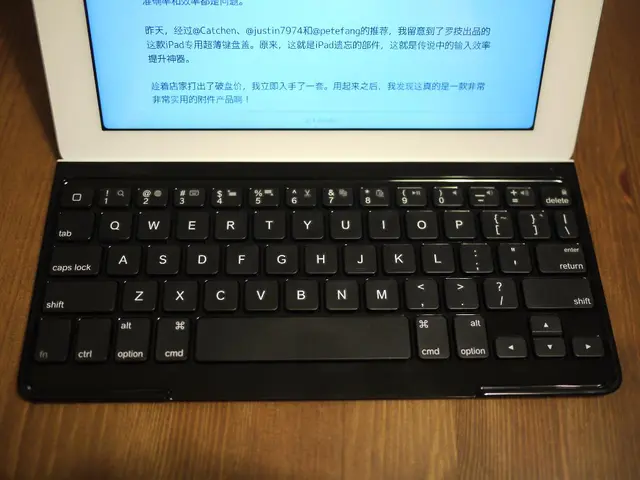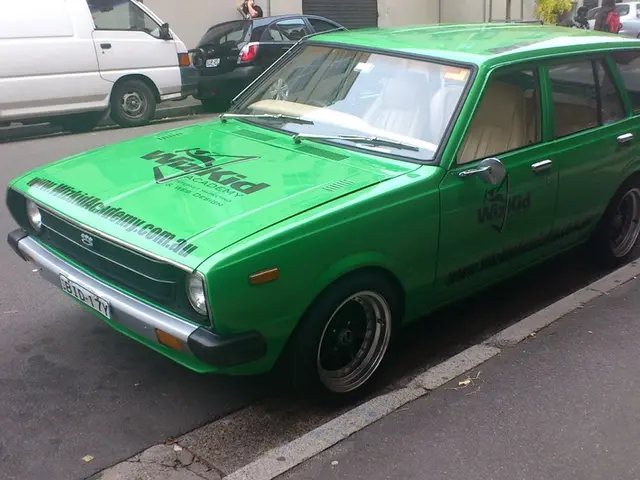Samsung's chip profits suffer due to export restrictions and price declines
Samsung Struggles in High-End Chip Market
It's a tough time for Samsung Electronics' chip business. After US trade restrictions dented sales of its premium chips, the company's profits saw a massive 40% drop in Q1 2025. Despite ambitious plans to catch up in the profitable AI memory sector, Samsung's fortunes remain uncertain.
According to the company's recent statement, Q1 profits at the chip division plummeted to 1.1 trillion won (US$770 million) due to a slip in average selling prices and reduced sales of high-bandwidth memory (HBM) chips due to the US export controls. Some clients also postponed orders, anticipating upcoming HBM3E products.
On a brighter note, Samsung's Chinese clients stockpiled chip supplies ahead of potential US tariffs, providing some relief. However, such one-time pretariff gains do little to ease concerns about long-term demand.
"Samsung's attempt to ramp up enhanced 12-layer HBM3E product in Q2 will meet demand from some clients," says Hyundai Motor Securities Co analyst Greg Noh. "But unless there's demand from Nvidia, it's tough to expect a dramatic boost in the chip business."
Things are tough for Samsung in the HBM market, with Nvidia Corp holding onto the top position, stocked with HBM chips from rival SK Hynix Inc. Samsung is currently working overtime to secure Nvidia's final approval for its advanced HBM products.
Samsung's HBM recovery path is filled with obstacles. It's pouring considerable resources into R&D, investing 9 trillion won in the first quarter of 2025, 16% more than a year ago.
Samsung isn't alone in facing challenges. Its foundry business has been hit by a lack of significant orders from major clients and has been outmatched by Taiwan Semiconductor Manufacturing Co (TSMC), which holds a 65% market share of the global foundry market. To compete, Samsung aims to start mass production using 2-nanometer processes in the June quarter, a crucial step in closing the gap with TSMC.
Uncertain global trade tensions make it hard to predict Samsung's performance in the future. If the uncertainties vanish, the company expects improvements in the second half of the year.
Insights:- Samsung's HBM3E battle with Nvidia will determine its position in the AI accelerator market dominated by Nvidia’s GPUs.- Samsung’s HBM4 roadmap targets mass production in late 2025, with customized variants for clients like Broadcom and Google expected by 2026.- The TSMC collaboration for HBM4 highlights Samsung’s need to bridge gaps in packaging and integration capabilities.- Samsung's HBM recovery hinges on passing Nvidia's June qualification test and ramping 12-layer HBM3E output. Failure could prolong SK Hynix's dominance, while success would position Samsung to capitalize on the AI-driven HBM demand surge expected in late 2025.
- Samsung's HBM3E products are being eagerly anticipated by some clients, as revealed by Hyundai Motor Securities Co analyst Greg Noh.
- Despite investing heavily in R&D, Samsung is currently playing catch-up in the AI memory sector, with rival SK Hynix Inc holding a significant advantage in the HBM market.
- The potential for increased tariffs has led some of Samsung's Chinese clients to stockpile chip supplies, offering a temporary respite from the downturn in sales.
- Samsung's recovery in the HBM market may hinge on securing Nvidia's approval for its advanced HBM products and ramping up the production of 12-layer HBM3E.








